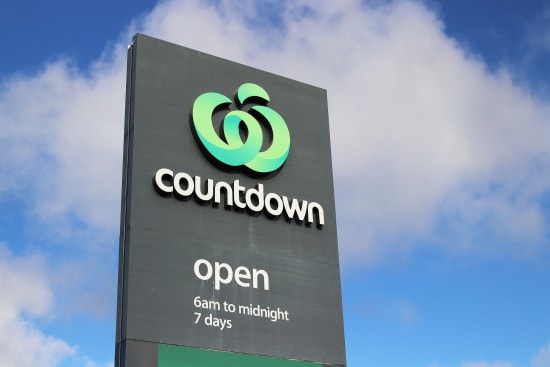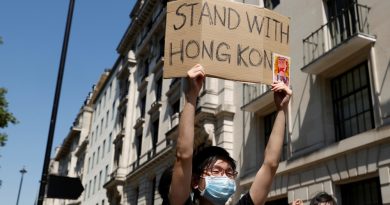Behind the 12% Pay Rise for Countdown Staff
Employment
Spurred by the soaring cost of living and confidence that the public had their backs, supermarket workers have won a major pay rise after six months of bargaining
Thousands of Countdown workers will receive an inflation-beating pay rise of around 12 percent, with a further 7 percent increase next June.
A new collective employment agreement between First Union and the Australian-owned supermarket chain – ratified by workers at hundreds of shop-floor meetings over the last month – delivers a rate of increase substantially higher than most union pay deals negotiated this year.
It also far outstrips the rate of wage inflation across the economy, measured by Stats New Zealand’s Labour Cost Index (LCI) at 3.7 percent.
The LCI is one labour market indicator among a batch of data released yesterday that heightened economists’ anxiety about what one called “a clear risk of a self-perpetuating upward spiral in wages and prices” and bolstered predictions of a 50 to 75 basis point interest rate hike by the Reserve Bank to suppress inflationary demand, chill down the labour market, and lift unemployment.
The Countdown settlement is particularly significant because of its scale – it directly covers 8500 workers who are members of First Union, and many of the core terms of the deal will inevitably flow on to non-union members through their individual employment contracts. About 50 percent of Countdown workers are union members.
New benchmark
The deal is likely to set a new benchmark in the wider retail sector, given that one in 10 workers in the industry are employed by Countdown, says Ben Peterson, the union’s acting secretary for retail, finance and commerce.
It will also be the likely starting point for negotiations over a fair pay agreement straddling both the supermarket duopoly (Countdown and Foodstuffs) and lesser brands like Farro and Moore Wilson’s, for which the union intends to initiate bargaining as soon as the new regime becomes operational on December 1.
The Countdown deal establishes the Living Wage ($23.65) as the starting rate for all workers (including teenagers and casuals). It also delivers an extra two days of sick leave, to which workers will be entitled from their first day on the job; a union bonus of between $100 and $300, payable next June; and a hard-fought provision for pandemic leave.
The union bargaining team have also established a toe-hold for a future campaign to resurrect penalty rates for shift work and anti-social hours, with the introduction of a $1 an hour premium for night workers.
Back-of-the-envelope calculations within First Union suggest the Countdown settlement could put an extra $100 million into the pockets of supermarket workers, helping to alleviate economic stress in primarily low-income households.
Newsroom asked Countdown for an estimate of the increase in the company’s wage bill as a result of the deal, but a spokeswoman said the company would not answer any of our questions yesterday because it had not yet received official word from the union that the agreement had been ratified by workers.
Willing to strike
First Union has seen Countdown as a major strategic target for improved pay and conditions, particularly in light of the stress on supermarket workers throughout Covid, the rising incidence of abuse and violence from shoppers, and the broad public understanding that the supermarket duopoly is extracting super-profits.
Bargaining started in March and involved 13 days of negotiations before a draft settlement was reached.
Countdown’s opening gambit was a pay rise offer of just 4 percent. According to Catherine Richards, a New Plymouth checkout manager and member of the union bargaining team, the company was given a clear message in response: “We said, ‘We can’t take that back to our members, and if we do industrial action will be on its way’.”
With many Countdown workers having scraped by on a bottom rate of $21.57 and the cost of living sky-rocketing, Richards told Newsroom there was determination on the union bargaining side to get a decent pay rise, and a willingness to go on strike if necessary.
“We’ve been told [through the Covid era] that we’re ‘essential workers’, and I think workers realised that they’re worth more than being treated as if, ‘oh you’re just a checkout chick’, or ‘oh, you just work in a supermarket’, and that, actually, we’re important to the whole country. I think that changed people’s mindset.
“And also, I think if we did get a low offer from the company the public would have been behind us 100 percent [if there had been strike action].”
The company lifted its offer from the initial 4 percent to an average of 12 percent relatively early on in the bargaining. However, talks dragged on for months in a bid to reach agreement on other issues. At the end of one negotiating meeting, a group of worker delegates staged something of a sit-down strike, refusing to return to their regions until agreement was reached on key demands.
One of those involved in the mini-protest, Napier worker Salvatore Rigione-Pisone, says major issues were at stake, including achieving the Living Wage as the starting rate for all workers, and the need for workers to have the protection of additional leave in the event of future pandemics.
For Rigione-Pisone, who has worked for Countdown for 10 years, the settlement means his rate will go up by $1.95 an hour, from $22.60 to $24.55. He works unloading inwards goods and is also a supervisor of his store’s long-life products.
As someone living on his own, the increase means he can now be “self-sufficient”. He says workmates with children, who have been struggling to cover the bills, have told him the settlement will make a meaningful difference in their households.
“And they are all looking forward to the backpay,” he says.
The agreement is dated from June 20, and union members are entitled to payment of the new rates from that date.
Pay increases in the deal range from around 7.8 percent to 17.2 percent, depending on the role, hours of work and length of service. That translates to per-hour increases from $1.78 to $3.40.
Big step up
Peterson says it’s a “very big step up on pay”, albeit from rates that had been eroded by rising inflation during the three-year term of the previous collective agreement. Echoing Richards’ comments, he says there was a “strong mandate for change” from union members.
Not everything was achieved, however, and issues around security and safe levels of staffing have been kicked into a joint working group to work through.
A collective pay deal just settled between clothing chain Cotton On and the union has delivered a similar rate of increase as the Countdown deal, with wages rising between 11.5 percent and 13.7 percent. The Cotton On settlement – covering 150-plus union members – has also established the Living Wage as the starting rate, which its workers have been campaigning for since 2019.
Both the Countdown and Cotton On deals were settled without industrial action, unlike many other collective pay agreements this year. Workers at two major packaging companies – also deemed to be essential and critical to the supply chain – went on strike for three 24 hour periods in August and September to induce their employers to lift their pay offers.
In a bitter dispute, Visy Holdings – owned by Pratt Consolidated, which in turn is owned by one of Australia’s richest men, Anthony Pratt – eventually lifted its offer from a 6 percent pay rise this year and 3 percent next year to a 7.3 percent/3 percent deal over two years, which the workforce has accepted. Visy also budged on its initial refusal to pay overtime rates until workers had put in 50 hours, to an agreement to pay time and a half after 45 hours of work.
At Japanese-owned Opal Kiwi Packaging, the company lifted its initial offer of 4 per cent this year and 4 percent next, to an 18-month deal with a 6 percent pay rise and a $1600 cash bonus.


